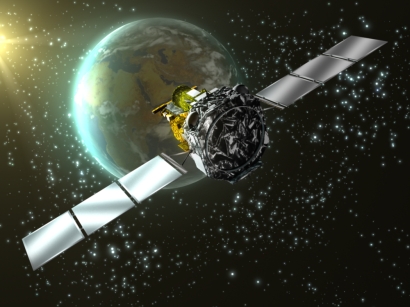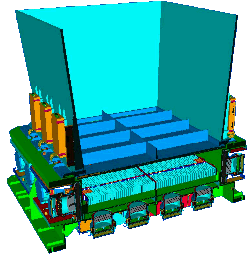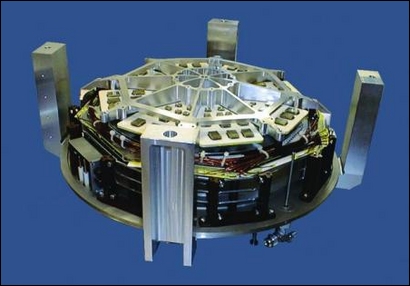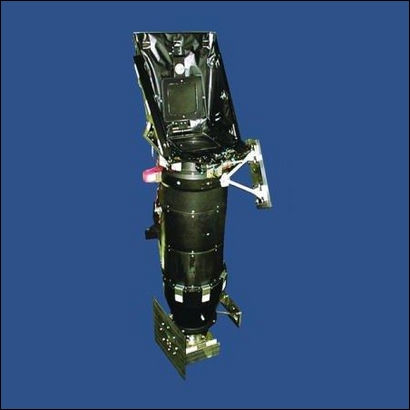INTEGRAL
Mission Overview

INTEGRAL was launched as part of ESA's Horizon 2000 program into a high eccentric orbit on a PROTON rocket on October 17, 2002, and is an international collaboration between Europe, Russia and the USA. Its science payload is designed for the imaging and spectroscopy of persistent and transient sources of cosmic gamma-ray emission.
INTEGRAL has now completed more than 500 orbits of the Earth, and continues to operate extremely well. The mission has been extended beyond its original life, and operations are now approved up to at least 2010.
A full description of the INTEGRAL satellite can be found on ESA's website.
Science Payload
The INTEGRAL science payload consists of 2 main instruments, IBIS and SPI, both with large fields of view, dedicated to studying the high-energy sky. The main instruments are supported by 2 narrow-field monitors in the X-ray (JEM-X) and optical (OMC) bands.

IBIS is the main imaging instrument, and consists of a complex detector plane, that views the sky through a coded aperture mask. The ISGRI detector is a pixellated 128x128 Cadmium-Telluride solid-state imager sensitive in the 15-1000 keV energy range, and generates images of the sky with a 12' (FWHM) resolution, and a typical source location of better than 1' over a 30x30 degree field of view.

SPI is the second high-energy imaging instrument, but in this case the emphasis is on very high-resolution spectroscopy between 20 keV and 8 MeV, supported by imaging on angular scales of ~1 degree over a similar field of view to IBIS.


INTEGRAL also includes two monitor instruments. The JEM-X X-ray monitor (left) provides high-resolution images in the 3-35keV range, and can locate an X-ray source to better than 30 arcsec precision. The optical monitoring camera (right) is sensitive to stars with a visual magnitude of up to 19.7.
All the instruments on INTEGRAL are co-aligned, simultaneously viewing the same part of the sky in various wavebands. The high-energy instruments all make use of the coded aperture imaging technique to form images when focussing optics are not possible.
More information on the INTEGRAL scientific instruments ( SPI, IBIS, JEM-X, OMC ) can be found on ESA's website.
Our activities
The Southampton group has been involved with INTEGRAL since the very beginning. Prof A Dean (Southampton) was one of the original proposers for the mission, which went through the ESA selection process in the early '90s. Researchers from Southampton have been active in the mission since then, responsible for aspects of the IBIS instrument design, construction and calibration up to and beyond launch.
The Southampton group also proposed and implemented 'The INTEGRAL Mass Model (TIMM)', a ground-breaking use of computer simulation in the design and implementation of a gamma-ray telescope.
Researchers from Southampton are now active in the analysis of data from all the INTEGRAL high-energy instruments.
Associated projects
- The IBIS survey
- The INTEGRAL Mass Model
- INTEGRAL Galactic Bulge Monitoring
- New INTEGRAL sources - follow up programme